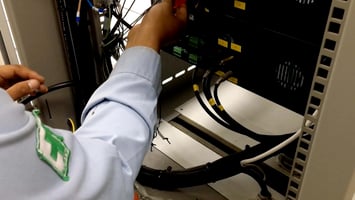
We live in a world where software development is Agile, Internet connections are lightning-fast, and smartphones age out every year or two. So, it’s not exactly news that technology changes come at us faster all the time. But that doesn’t make them any less critical to respond to, especially in the enterprise space, where keeping up is a competitive necessity, not a personal choice. Couple constant change and growing complexity with the increasing need for companies to bring locations on board more quickly than ever, and you might end up with a recipe for disaster. Challenges are constant and obstacles often pop up without warning. Best case, everything slows down; worst case, unexpected issues derail a deployment.
No matter what industry you’re in or which technology you’re deploying, broadly dispersed locations are always a challenge to get up and running efficiently. Such rollouts often face common deployment issues, and after managing thousands of location openings across the country, we’ve learned what drives success and what causes train wrecks.
Over the next five weeks, we’ll dive more deeply into the key ways to ensure greater success in a multi-phase, multi-location technology deployment. While it may be tempting to skip a step to speed things up, in our experience that only ends up adding extra time and cost. At the end of the series, we’ll talk about how to successfully manage these services on an ongoing basis.
First, though, here’s a sneak peek into the five factors that will make complex technology deployments successful.
Site Assessments Provide the Clarity You Need
Headwork before footwork is the best way to start. Site assessments tell us what can and should be done, spotlighting existing gaps in technology and helping us plan for potential pitfalls. People often confuse a site assessment with a site survey, but they are different in their complexity.
A site survey takes a technology snapshot of any given location to help companies identify quick improvements, such as wiring that needs to be cleaned up or security cameras that should be adjusted. On the other hand, site assessments look broadly at each location to scope the details of a project and to determine whether technical requirements can be supported. Next week, we’ll dive deeper into this topic.
A Tiger Team Approach Accelerates Deployment
As you would expect, a Tiger Team is a hand-picked, highly skilled group of people who are tenacious about solving or preventing problems. A variety of planning, logistics, and execution skills are required to accomplish tasks at multiple sites in a complex technology deployment. Tigers go in at the beginning of a project and ensure that the highest value locations (from either a revenue or brand standpoint) are launched without a hitch. Then they impart their knowledge to the rest of the deployment team so they can launch all locations without issue. This approach effectively speeds execution and thus revenue.
Speaking of the deployment team: failing to choose the right team can sidetrack a project more often than any technical issue, and yet, companies often shortchange this step. The correct balance of skill sets from both the client and technology provider are critical to success, but other factors also come into play. Take culture, for instance. Some of our most successful deployments have come not only from the quality of our field techs, but also when we partner with companies that have mutually shared values of open communication, transparency, and going the extra mile.
Strong Project Management Keeps Everyone and Everything on Track
With multi-phase projects, a great project manager who owns the project and communicates frequently is crucial. This person will keep each phase moving along, coordinating the changing roster of technical and vendor partners, and, most important, assigning responsibility and holding people accountable. The project manager will write the plan, but also must know how to ask all the right questions and keep everyone focused to avoid delays and cost overruns. The often-underestimated kickoff meeting is also a key to success. We take them very seriously, and, in fact, encourage two kickoffs – one for deployment and the other for the ongoing support phase.
Staging and Testing Mean You Get It Right Before You Roll
Another critical part of the project plan is staging and testing, which, if done properly, creates the kind of plug-and-play scenario that streamlines and speeds up the installation process onsite. Software and/or hardware solutions should be completely assembled and tested in a staging environment before they are kitted and shipped. This ensures that the proper equipment and cables make it to the correct location documented and in working order. It removes guesswork, identifies potential issues and helps the team define the installation guide.
Follow Best Practices for Test and Turn-Up
Test and turn-up services are essential in minimizing downtime in a network deployment and ensuring optimal performance of new technology. The test and turn-up process certifies that equipment is operational, performs efficiently, and is integrated into a network management system. Effective test and turn-up services include a written plan outlining the Methods of Procedure (MOPs) for activation of network devices and ports, validation of LAN/WAN connectivity, and performance testing. Change management and process documentation updates are necessary once site testing is complete. Lastly, skilled technicians with multi-platform expertise will ensure a successful deployment as well as provide the ability to customize for unique requirements.
Stay informed
When initiating a complex deployment, you may have chosen the right technology for your business, but if the project isn’t managed properly, you risk interrupting business or causing a delay in opening locations and negatively impacting revenue. You need a partner you can trust to project manage, stage, assemble, ship, document, and install at locations throughout the country. Timing and informed decisions are everything.
